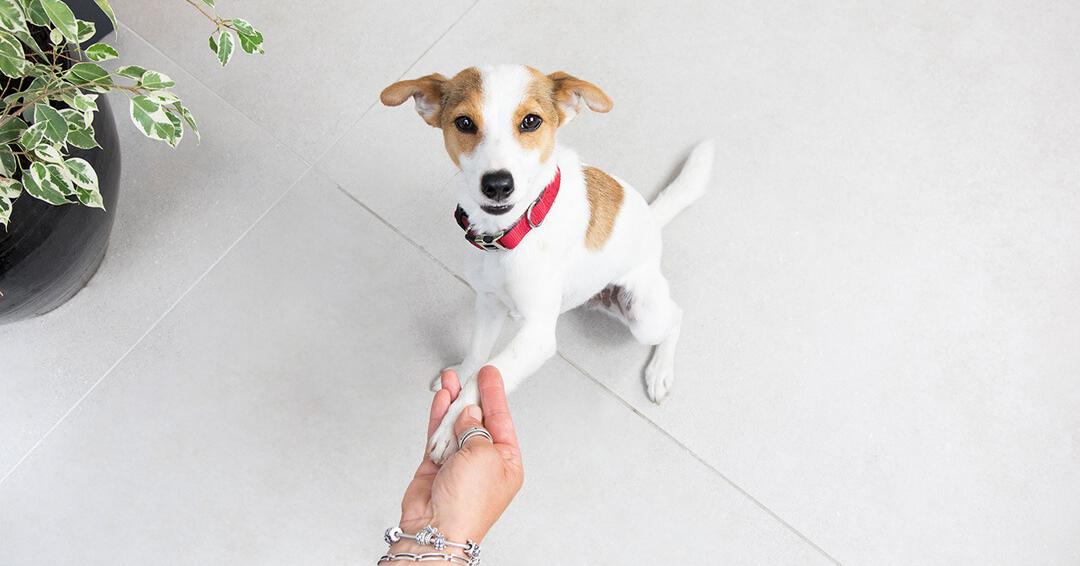Bringing home a puppy is an exciting experience but can also be overwhelming. The right approach and techniques will make teaching and bonding with your pup much more manageable. It’s important to remember that all dogs learn differently, so some puppies may require more patience than others while learning essential skills. Remembering that puppies are engaging and intelligent creatures is essential, so creating a safe and comfortable learning environment is vital. With the proper knowledge and determination, anyone can set their puppy up for success by implementing these practical training techniques.
Positive reinforcement
Positive reinforcement is an effective and humane training technique that encourages puppies to repeat healthy behaviors. This teaching method involves rewarding desired behavior with treats, praise, or physical affection. Repetitive reinforcement of positive behavior helps consistently remind your puppy which behaviors are preferred and accepted. For example, if your puppy relieves himself outside in the designated area, reward him with a treat or verbal praise to reinforce this good habit. It’s important to note that it can be easy to over-reward; try to give rewards only when necessary and appropriate. Puppies may become confused and complacent if rewarded for every action, so be sure to reward good behavior judiciously.
Crate training
Crate training is a great way to create a safe space for puppies and owners. It ensures that the puppy will not access any off-limit areas while you are away and provides a comfortable sleeping space. Start by introducing your pup to his “den” and make sure he has plenty of toys and treats. It helps build an association between going inside the crate with positive experiences. When it’s time for him to enter the crate, reward him with praise or treats when he complies. Eventually, your pup will learn to understand that entering the crate is expected behavior. It’s essential to ensure that the crate is big enough for your pup to move around and small enough that he cannot soil it. Crate training should be gradual, and puppies should never be forced into the crate or punished for not wanting to enter it. Making the crate experience a negative one can cause your puppy to avoid using it again, so ensuring it is a positive experience for them is vital.
Basic obedience commands
Teaching basic commands such as “sit,” “stay,” “heel,” etc., helps keep your pup safe while outdoors and ensures they understand your expectations. Start by introducing the command in a quiet area with minimal distractions. Use treats or toys to entice your pup to comply and reward them when they obey. If your pup loses focus, break the session into smaller intervals and slowly work up from there. Repetitive practice of basic obedience commands will help increase their attention span and make future training sessions easier. It’s essential to remember that puppies learn differently; some may take longer, so it’s important not to rush the process. If you’re looking for an easily trainable puppy, have a look for Goldendoodle puppies for sale, these pups are known for being intelligent and friendly.
Puppies need proper socialization beginning at an early age to become confident and friendly adults. Start by introducing them gradually and carefully to new people, pets, sights, sounds, smells, and surfaces. It will help them develop healthy relationships with other animals, impacting their behavior later in life. To avoid overwhelming your pup during this process, start with one or two people and work up from there. For example, if you have a puppy, try inviting a friend to meet him in the comfort of your home and let them bond slowly. Once he seems comfortable with the friend, you can move on to larger groups of people. Proper socialization will help build confidence and make future interactions less intimidating for your pup.
Leash manners
Teaching your puppy how to walk correctly on a leash is essential for their safety and yours. Start by introducing them to the feel of wearing a collar and leash while indoors; this helps build an association between the equipment and positive experiences. After they are comfortable, take them for short walks in an area with minimal distractions. Letting your pup explore is essential, but keep an eye on him to ensure he does not stray too far or pull on the leash. Stop gently guiding him back to you using treats if he begins pulling. Rewarding calm behavior helps reinforce good manners while walking outdoors. It is also essential to let your pup decide when they are ready to move forward; pushing them can cause anxiety and potentially lead to behavioral issues in the future.
Housebreaking
Housebreaking puppies can be difficult for many owners, but it is essential for their safety and hygiene within the home. The most common methods involve paper training, crate training, and pads. The key to success with housebreaking is consistency; make sure your puppy has access to the same area every time he needs to relieve himself. Also, be sure to reward him for eliminating in the designated spot. If you catch him eliminating in an off-limit area, do not scold or punish him; instead, calmly guide him to the correct spot and reward him when he goes there. Housebreaking takes patience and dedication but can be successful with consistency.
